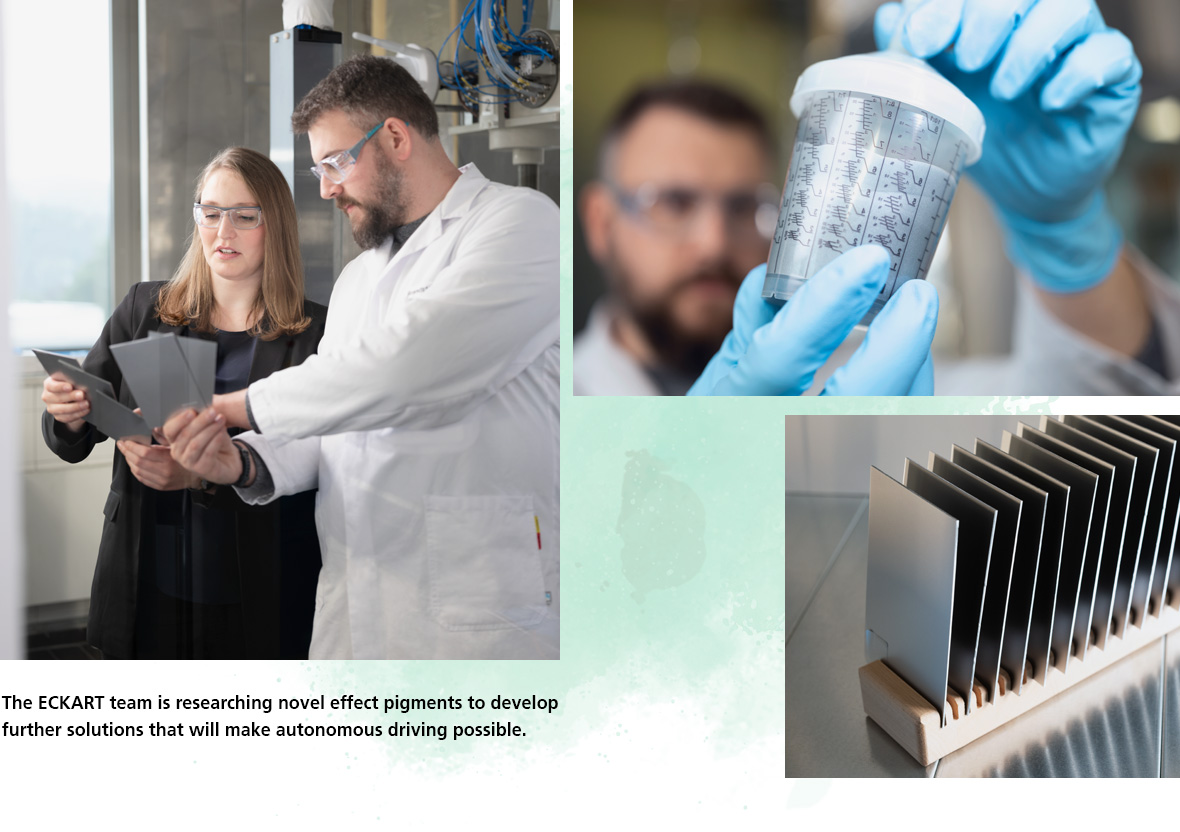OUR EFFECT PIGMENTS CONTRIBUTE TO ENABLING THE CONNECTED MOBILITY OF THE FUTURE.

FOCUS ON CUSTOMER NEEDS
During her studies, Alexandra Preiß concentrated on materials science and materials engineering. Currently, she serves as a project manager in technical marketing in ALTANA’s ECKART division. In this role, she acts as an interface, assessing customer requirements, coordinating product development testing, and reviewing production processes. These efforts lay the groundwork for innovative solutions, for example in the realm of autonomous driving.
CARS, ROBOT VACUUM CLEANERS, AND SMARTPHONES are just three examples of the countless everyday products equipped with sensors – a trend on the rise. A peek inside a modern car underscores this reality: Sensors are indispensable for enhancing driving comfort, efficiency, and safety, especially in the context of automated driving and parking functions. Manufacturers often rely on radar sensors as the car’s sensory organs in these scenarios. The use of radar sensors, however, presents unique challenges in the development of effect pigments. “The aluminum pigments forming the basis of metallic paints, enabling light to dark silver tones, are not radar transparent. They reflect radar beams, rendering the sensors beneath the paint virtually blind,” explains Alexandra Preiß.
ADDRESSING THIS CHALLENGE, ECKART has introduced a patented solution to the market – the world’s first radar-transparent pearlescent pigments. “We have developed four innovative pearlescent pigments that are radar transparent. By combining these with our metallic aluminum pigments, we can offer our customers brilliant silver tones for autonomous driving. This means that radar sensors can also be mounted under metallic paintwork,” says Preiß.
Alexandra Preiß is actively involved in advancing innovative effect pigments designed to provide superior functionality while concurrently diminishing the CO2 footprint in the supply chain.
LOOKING AHEAD, further advancements are necessary for fully autonomous passenger transport. The prevalence of sensors in cars is anticipated to rise. ECKART’s experts are dedicated to ongoing research into innovative effect pigments, collaborating with customers to find application technology solutions that offer a high degree of formulation freedom and flexibility for autonomous driving. Sustainability is a key focus in product development and manufacturing, forming the third pillar alongside functionality and appearance. The pigments are designed to enable resource-efficient and long-lasting use, whether under high temperatures with ample sunshine, in tropical climates with high humidity, or facing icy winds and snowfall in the winter.
TOGETHER WITH ITS CUSTOMERS, the division is exploring the use of recycled aluminum. In procurement, emphasis is placed on acquiring aluminum produced using renewable energy. “By sourcing sustainable aluminum and utilizing green electricity in our production, we contribute to reducing the carbon footprint in the supply chain,” says Alexandra Preiß. “Simultaneously, our innovative products contribute to enabling the connected mobility of the future.”

